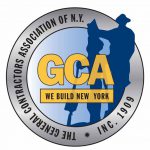Court Dismisses Complaint and Co-Defendant’s Cross-Claim for Contractual Indemnification Against Defendant Snow Removal Contractor
published on May 30, 2012
Court Dismisses Complaint and Co-Defendant’s Cross-Claim for Contractual Indemnification Against Defendant Snow Removal Contractor
published on May 30, 2012
In a decision dated May 15, 2012, Justice Michele M. Woodard dismissed the plaintiff pedestrian’s complaint against the defendant snow removal contractor because it did not owe the plaintiff, who slipped and fell on ice, a duty of care and did not create or exacerbate the alleged ice condition in the roadway in front of co-defendant property owner’s premises. In addition, because there was no evidence that the snow removal contractor was negligent in its snow removal, the Court dismissed the property owner’s cross-claim for contractual indemnification as against the snow removal contractor.
Spellman v. AAA Maintenance, LLC, et al., Index No. 2785/10 (Nassau Co. Sup. Ct., May 15, 2012)
Court Dismisses Common Law Negligence and Labor Law §§200 and 240(1) Claims Against Defendant Municipality and Dismisses All Claims Against Two Municipal Agencies
published on May 25, 2012
Court Dismisses Common Law Negligence and Labor Law §§200 and 240(1) Claims Against Defendant Municipality and Dismisses All Claims Against Two Municipal Agencies
published on May 25, 2012
In a decision dated May 21, 2012, Justice Thomas E. Walsh II dismissed those portions of the plaintiff’s complaint against a defendant municipality and project owner sounding in common law negligence and violations of Labor Law §§200 and 240(1). The construction worker plaintiff, age 52 at the time of the accident, alleged that he sustained personal injuries on April 22, 2008, while working in a roadway trench in Orangetown, New York. The plaintiff alleged that on that date, his shovel was contacted by a fallen piece of blacktop, causing bodily injury. The Court granted those portions of the defendant municipality’s summary judgment motion that addressed the plaintiff’s causes of action for common law negligence and pursuant to Labor Law §§200 and 240(1). In addition, the court dismissed outright the entirety of the plaintiff’s claims against two municipal agency defendants that did not own or supervise the subject project, or have notice of the defective condition.
Van Horn v. Town of Orangetown, Index No.: 1157/09 (Rockland Co. Sup. Ct., May 21, 2012)
Court Grants “Labor Law” Defendants Summary Judgment Dismissing Plaintiff’s Complaint
published on May 03, 2012
Court Grants “Labor Law” Defendants Summary Judgment Dismissing Plaintiff’s Complaint
published on May 03, 2012
In a decision dated May 2, 2012, Justice David B. Vaughan granted defendants’ Perkan Concrete Corp., the New York City School Construction Authority, the City of New York and the Board of Education of the City of New York’s motion for summary judgment dismissing the plaintiff’s complaint sounding in common law negligence and violations of Labor Law §§200, 240(1), 241(6). The construction worker plaintiff, age 56 at the time of the accident, alleged that he sustained personal injuries on November 14, 2007, while working on the sidewalk abutting Public School 329 in Brooklyn, New York. On that date, his leg was contacted by a Bobcat vehicle being operated by a co-worker. The Court granted in its entirety the defendants’ summary judgment motion seeking dismissal of all Labor Law and common law negligence claims. Of particular note was the Court’s conclusion, inherent in its dismissal of the case, that none of the plaintiff’s enumerated provisions of the Industrial Code were applicable, were violated or were substantial factors in the happening of the accident.
Gonzalez v. Perkan Concrete Corp., Index No.: 24209/08 (Kings Co. Sup. Ct., May 2, 2012)
Court Grants Defendant’s Motion for Summary Judgment Dismissing Plaintiff’s Causes of Action for Common Law Negligence and Violations of Labor Law §§200, 240(1) and 241(6)
published on May 02, 2012
Court Grants Defendant’s Motion for Summary Judgment Dismissing Plaintiff’s Causes of Action for Common Law Negligence and Violations of Labor Law §§200, 240(1) and 241(6)
published on May 02, 2012
In a decision dated April 18, 2012, Justice Roy S. Mahon granted defendant Eastport Home & Land Company’s motion for summary judgment dismissing the plaintiff’s complaint sounding in common law negligence and violations of Labor Law §§200, 240(1), 241(6). This action arises out of the personal injuries allegedly sustained by the plaintiff on March 3, 2005, at approximately 2:30 p.m., while he was working as a prefabricated stair installer. The plaintiff and a co-worker were carrying a set of prefabricated stairs to one of the condominium units being constructed at a condominium complex under development. The plaintiff was walking backwards when he allegedly tripped over a PVC pipe that was buried in the ground. Regarding the common law negligence and Labor Law §200 causes of action, the Court determined that this case involved the condition of the premises so the plaintiff was required to prove that the defendant had either created the dangerous condition (i.e. an exposed piece of buried PVC pipe) or had actual or constructive notice of it. The Court determined that the defendant established that it did not create the dangerous condition and further that it did not have notice, actual or constructive, of the specific condition that injured the plaintiff. According to the Court, the plaintiff was unable to refute the defendant’s arguments with proof in admissible form. The Court also dismissed the plaintiff’s Labor Law §240(1) cause of action because the plaintiff’s accident did not involve an elevation-related risk or the effects of gravity. Regarding the plaintiff’s Labor Law §241(6) cause of action, the Court determined that none of the Industrial Code Rules cited by the plaintiff were supported by the record. In light of the foregoing, the Court granted the defendant’s motions for summary judgment and dismissed the plaintiff’s complaint in its entirety.
McCullough v. L.P. Stair & Rail, Inc. et al., Index No.: 16458/07 (Nassau Co. Sup. Ct., April 18, 2012)
Stephen M. Cohen Wins Defense Verdict in Labor Law Case.
published on April 03, 2012
Stephen M. Cohen Wins Defense Verdict in Labor Law Case.
published on April 03, 2012
The claimant, a 44-year-old Union Local 806 bridge painter/sandblaster employed by CCA Civil/Halmar subcontractor Mimosa Construction, Inc., claims that he was injured on September 26, 2009, at a construction yard underneath the Alexander Hamilton Bridge in Bronx, New York. He alleges that while trying to manually lift heavy steel tubes, he tripped/slipped on debris (an empty water bottle) on the bed of the truck he was standing on, causing the steel he was holding to hit his elbow. He then fell onto the bed of the truck. The claimant brought suit against the State of New York and the New York State Department of Transportation in the Court of Claims alleging common law negligence and violations of Labor Law §§200, 240(1) and 241(6). As a result of the accident, the claimant allegedly sustained serious personal injuries and never returned to work. Following a bench trial before Hon. Faviola A. Soto, the State and DOT successfully obtained a defense verdict thereby dismissing the claimant’s case.
Rocha v. State of New York et al., Index No. 117724 (N.Y. Ct. Claims 2012)
Thomas J. Hall Wins Verdict In Favor of Defendants / Second Third-Party Plaintiffs on Contractual Contribution / Indemnity Claims in Labor Law Case.
published on April 02, 2012
Thomas J. Hall Wins Verdict In Favor of Defendants / Second Third-Party Plaintiffs on Contractual Contribution / Indemnity Claims in Labor Law Case.
published on April 02, 2012
The plaintiff, a plumber employed by second third-party defendant, Pace Plumbing Corp., alleges that he was involved in a construction accident on April 17, 2003, at a building owned by defendant Rockefeller Center North, Inc. and leased by defendant Time, Inc. The plaintiff sued Rockefeller / Time, who in turn impleaded Pace asserting a contractual contribution / indemnity claim based upon a one page indemnification agreement that was contained within a subcontract for plumbing demolition work between Pace and third-party defendant, McCann Inc. After the completion of discovery, Rockefeller / Time and Pace negotiated a partial settlement with the plaintiff whereby they agreed to pay a sum certain to settle the plaintiff’s claims and to proceed to trial on Rockefeller / Time’s second-third party claims for contractual contribution / indemnity against Pace. At trial, Rockefeller / Time successfully obtained a verdict in its favor on the contractual contribution / indemnity claims against Pace.
Picano v. Rockefeller Center North, Inc. et al., Index No. 115832/04 (N.Y. Co. Sup. Ct. 2012)
First Department Affirms Dismissal of Plaintiff’s Complaint against Defendant City of New York
published on March 13, 2012
First Department Affirms Dismissal of Plaintiff’s Complaint against Defendant City of New York
published on March 13, 2012
In a decision entered March 13, 2012, the Appellate Division, First Department unanimously affirmed the lower court’s decision granting defendant, the City of New York, summary judgment dismissing the plaintiff’s complaint, including those causes of action for common law negligence and pursuant to Labor Law §§200 and 241(6). The plaintiff, an ironworker employed by a non-party contractor, was injured while performing rivet removal work on the Williamsburg Bridge when he stepped on a loose rivet stem and fell. The First Department held that the common law negligence and Labor Law §200 causes of action were properly dismissed by the lower Court because there was no evidence that the City created the condition and it was not responsible for nor did it have any input in setting up the work site. Moreover, the plaintiff testified that he did not notice any debris on the platform where he fell before the accident and that proper procedures were in place to clear the platform of any debris during the day. Additionally, the City did not receive any prior complaints regarding any tripping hazards. The Appellate Division also held that the lower Court properly dismissed plaintiff’s Labor Law §241(6) claim, which was predicated on an alleged violation of Industrial Code Rule 23-1.7(e). According to the First Department, even if the area the plaintiff traversed could be deemed a “passageway” within the meaning of Rule 23-1.7(e), the plaintiff testified that he tripped on the rivet after he entered the common, open work area. Rule 23-1.7(e) also did not apply because the evidence showed that the subject rivet stem constituted an integral part of the plaintiff’s work. The City’s evidence that the plaintiff was engaged in rivet removal, such work was ongoing in various parts of the bridge, and all falling parts could not be caught while the plaintiff and his coworkers were actively engaged in the removal work, established that the rivet stem resulted from the work plaintiff was performing. The plaintiff’s argument that the rivet did not originate from the work he himself was performing was found by the Appellate Division to be unavailing, as rivets left by the plaintiff’s coworkers, who were performing the same rivet removal work, could still be deemed an integral part of the work.
Zieris v. City of New York, 93 A.D.3d 479, 940 N.Y.S.2d 72 (1st Dep’t 2012)
We are pleased to announce that Sandro Battaglia has joined the Firm as Of Counsel
published on January 17, 2012
We are pleased to announce that Sandro Battaglia has joined the Firm as Of Counsel
published on January 17, 2012
Court Grants Defendant Skanska USA Inc. Summary Judgment Dismissing Plaintiff’s Complaint
published on January 09, 2012
Court Grants Defendant Skanska USA Inc. Summary Judgment Dismissing Plaintiff’s Complaint
published on January 09, 2012
In a decision dated January 9, 2012, Justice Julia I. Rodriguez granted defendant Skanska USA Inc.’s (“Skanska”) motion for summary judgment dismissing the plaintiff’s complaint sounding in common law negligence as against Skanska. The plaintiff alleged that he sustained personal injuries on March 22, 2007, while walking in the crosswalk at the intersection of West 161st Street and Gerard Avenue, Bronx, New York. The Court determined that Skanska established by testimony and documentary evidence that it did not perform work at the accident site. While the plaintiff had submitted testimony that Skanska was working in the area of the accident, he offered no other form of evidence to substantiate that claim. Further, the plaintiff’s attorney’s affirmation indicating that the documents presented by Skanska provided proof of the existence of work being performed in the subject intersection was, upon the Court’s review, without merit. As such, the Court granted summary judgment to Skanska on the issue of liability and dismissed the plaintiff’s complaint as against it.
Amasike v. City of New York et al., Index No.: 305167/08 (Bronx Co. Sup. Ct., January 9, 2012)
We are pleased to announce that Todd Paradeis has become a Partner of the firm.
published on January 01, 2012
We are pleased to announce that Todd Paradeis has become a Partner of the firm.
published on January 01, 2012








